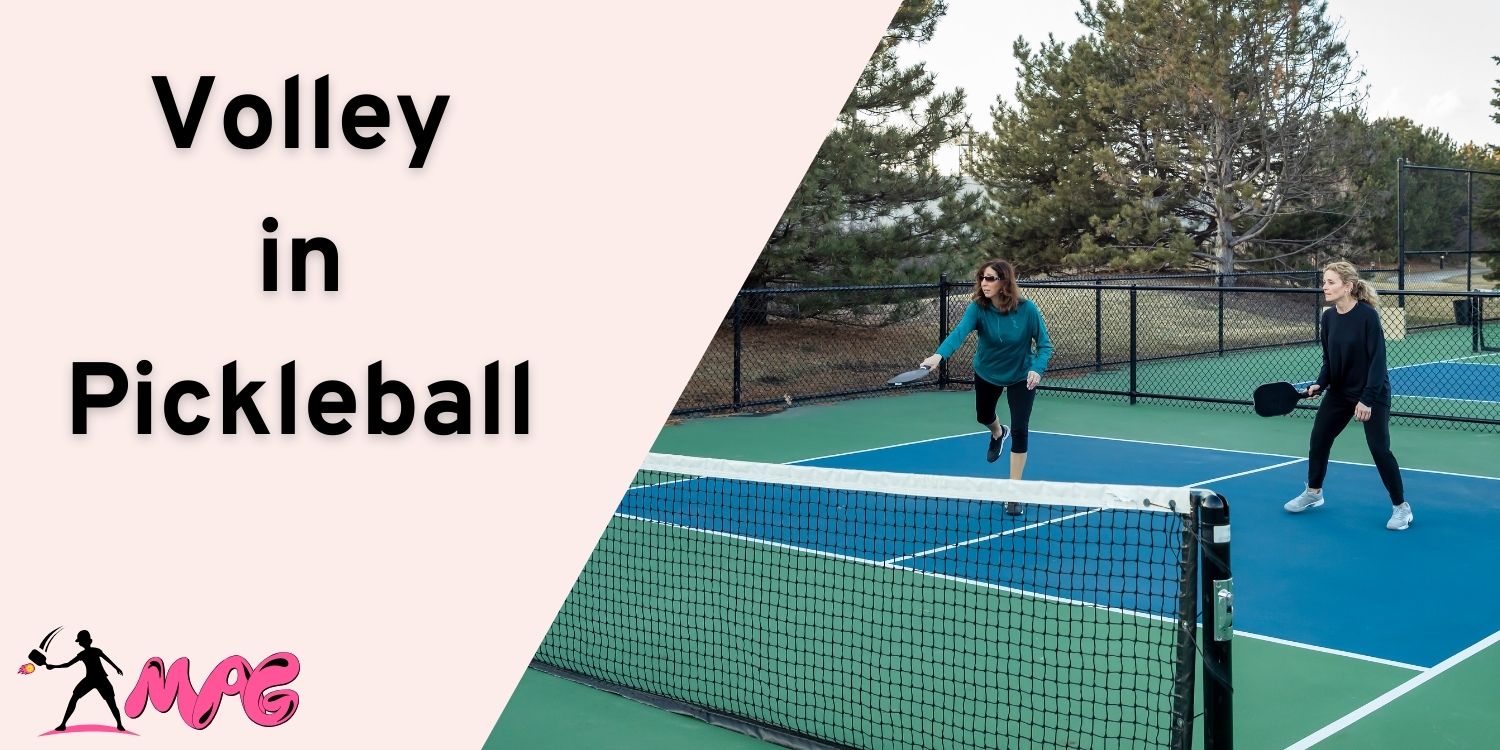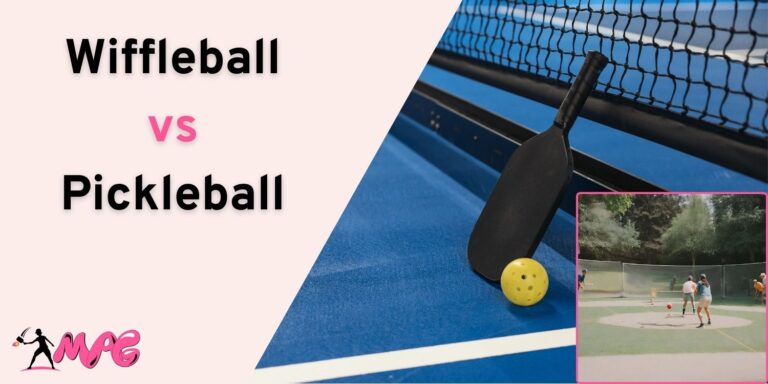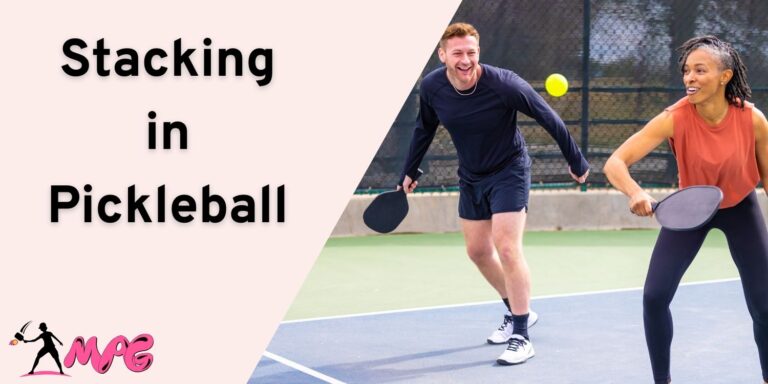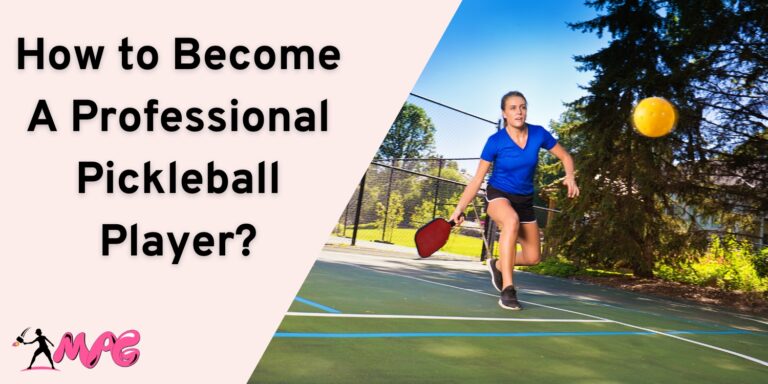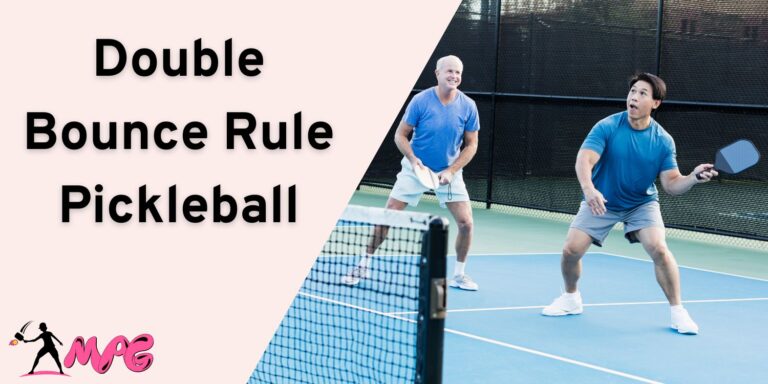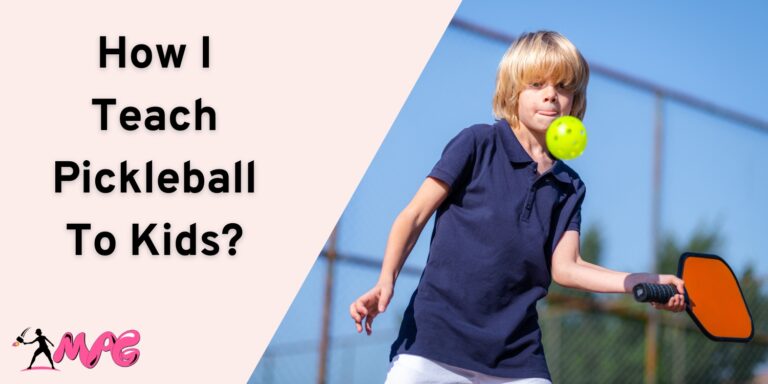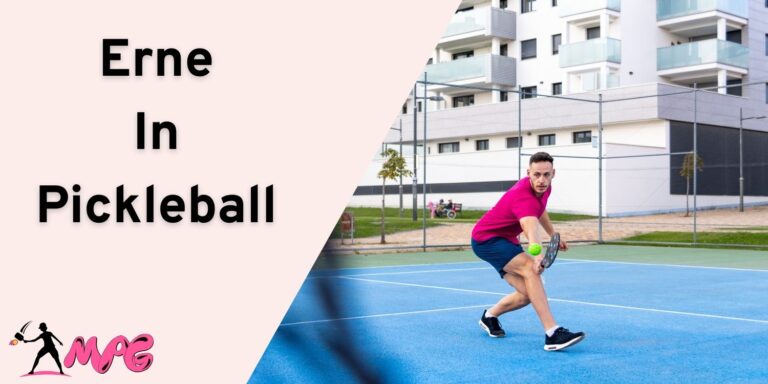Volley in Pickleball – Why it’s So Important?
You might have heard the term volley and might be already familiar with it from the infamous sport “Volleyball” where you chug the ball by making a fist-like gesture towards your opponent across the net.
The chugging shot is performed by making sure the ball successfully crosses the net without making contact with the ground.
Even though it may sound similar, in a game of Pickleball, instead of using your bare hands, players use a wooden paddle to do a similar shot while preventing the ball from hitting the ground which is executed near the net or the kitchen zone either in a defensive or offensive manner.
Similarly to a volleyball sport, a volley shot can only be performed with skill and by being alert as you may miss your ball in the blink of an eye.
If you want to dig in on a volley shot or familiarize yourself more with the fact that what is volley in pickleball?, then I would advise you to scroll down below.
Subdivision Of Volley Shots
A Volley shot is subdivided into various forms such as,
1. Standard or Forehand Volley
This is the most common form of volley requiring minimal skills as you can easily execute it since it barely requires you to change the direction of your paddle hand.
Forehand volley is hit with the top of the paddle you are holding and is basically executed to repel the ball as a way to answer the shot.
It is usually safe to use this method as there is minimal chance of fault when executed and both players of opposing teams can perform it.
2. Backhand Volley
It is the exact opposite of the forehand volley and may require a little bit of finesse, depending on the type of your skill.
In order to perform a backhand volley, you need to keep the paddle rotated to hit the backside to perform a backhand volley.
Backhand volleys are much more powerful as they give you control over the ball in terms of force.
3. Soft or Dink Volley
I call this one a bare minimum volley since it requires you to hit the ball with minimal effort. It is usually performed in response to an aggressive shot and is often situational.
Keep in mind that soft or dink volleys should only be executed when necessary due to their “High-risk low reward” nature.
4. Offensive Or Punch Volley
The most aggressive form of volley is performed to show dominance in the court over your opponent.
This is a decisive strike in a pickleball as it is often harder to repel if the opponent isn’t alert or has lower reflexes or skill.
However, it is only executed when the ball is well over a net, otherwise, you may hit the net resulting in a replay in the best-case scenario or even a fault point in the worst-case scenario.
5. Spin Volley
The most advanced form of volley shot in the game as it requires plenty of finesse and has a status of “High-Risk High Reward”.
Plenty of practice is required to acute or obtuse a shot towards your rival across the net and can be performed by spinning the ball after it is hit with the wooden paddle using wind to manipulate the shot.
It often confuses your opponent and has a higher chance of scoring a point even if your rival is alert or has intermediate skills.
6. Cross shot Volley
It is a typical form of volley but with a twist as you can exchange the volley towards other players across the net.
It can be executed in both singles and doubles format and both backhand and forehand volley can be used to achieve it.
How Should A Volley Shot Be Performed?
There are a couple of things necessary to perform in order to execute a volley shot.
1. Alert stance
Keep your legs wide apart and make sure you have your eyes on the ball at all times. Even the slightest form of distraction will make you miss out on the ball you are supposed to hit.
Footwork is highly important when achieving this stance as micro steps are performed during maneuvering across the non-volley zone.
Make sure your non-dominant shoulder is towards the net and you achieve a perfect balance over your body to allow yourself to quickly recover from a shot.
2. Handshake Gesture
Hold the wooden paddle just like you are performing a handshake on the opposite hand of a person.
Make sure your grip is firm but not too light and never squeeze on it otherwise you will lose on accuracy or swing factor.
During this gesture, your wrist should never be rigid so you can easily control the direction of the ball you are about to hit.
3. Mind Your Distance
Knowing your position in the court is not only crucial in the game but it will also prevent a fault since you need to stand as close to the kitchen zone but never too near a post or a net.
Since permanent objects can trigger a fault point for the opposite team which can be a deciding factor in concluding a victory in the game.
Bottom Line
Understanding volleying is highly important in the game because most of the time you would be spending your time performing it.
In fact, most of the scores are performed during volleying and only the best of the best can survive the back-and-forth execution of the ball, so stay focused and make sure your body is always in the alert stance with plenty of flexibility across your wrist.
If you feel like this article regarding “What is volley in pickleball?” Was helpful, feel free to bookmark it, as I will be curating more articles like these.

